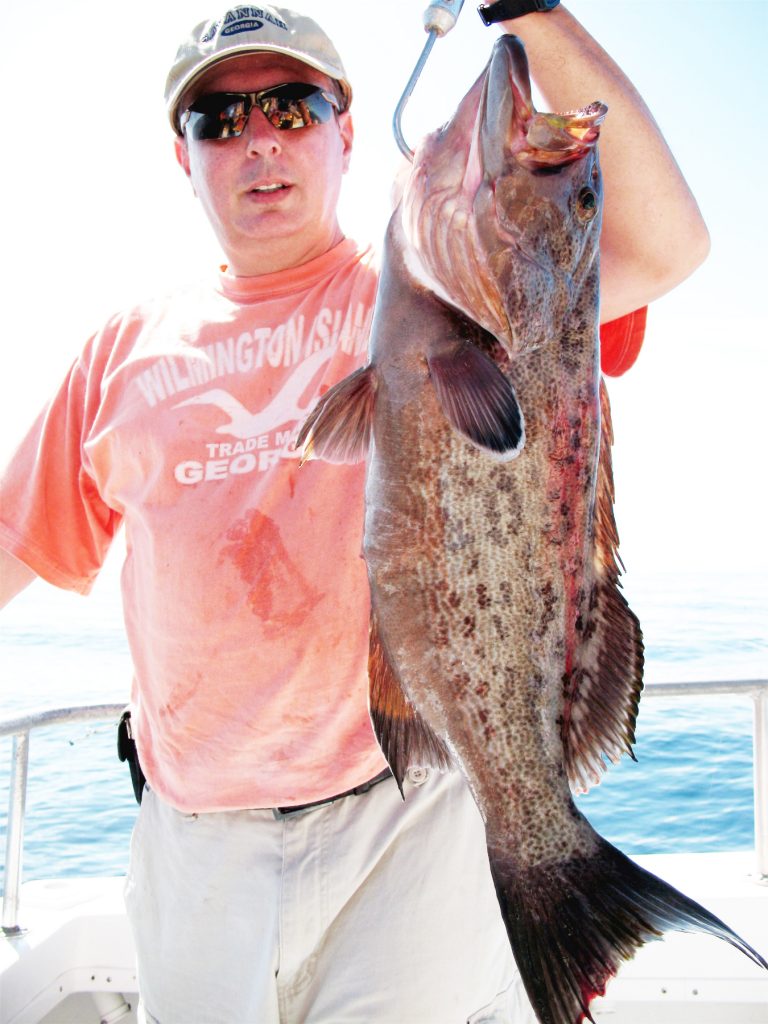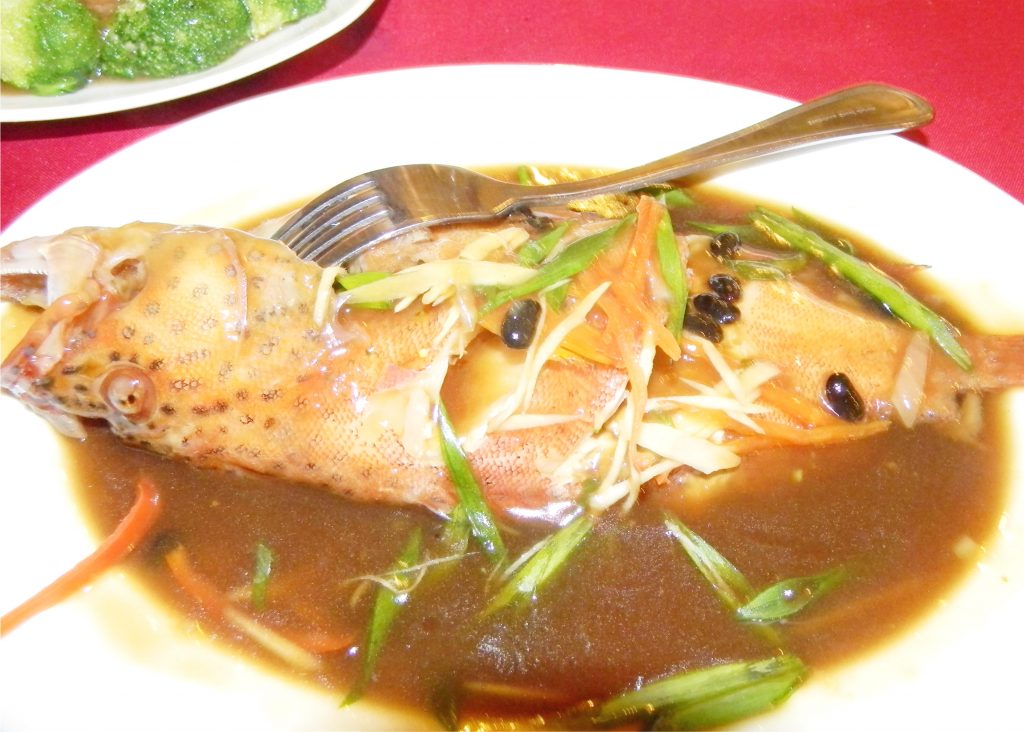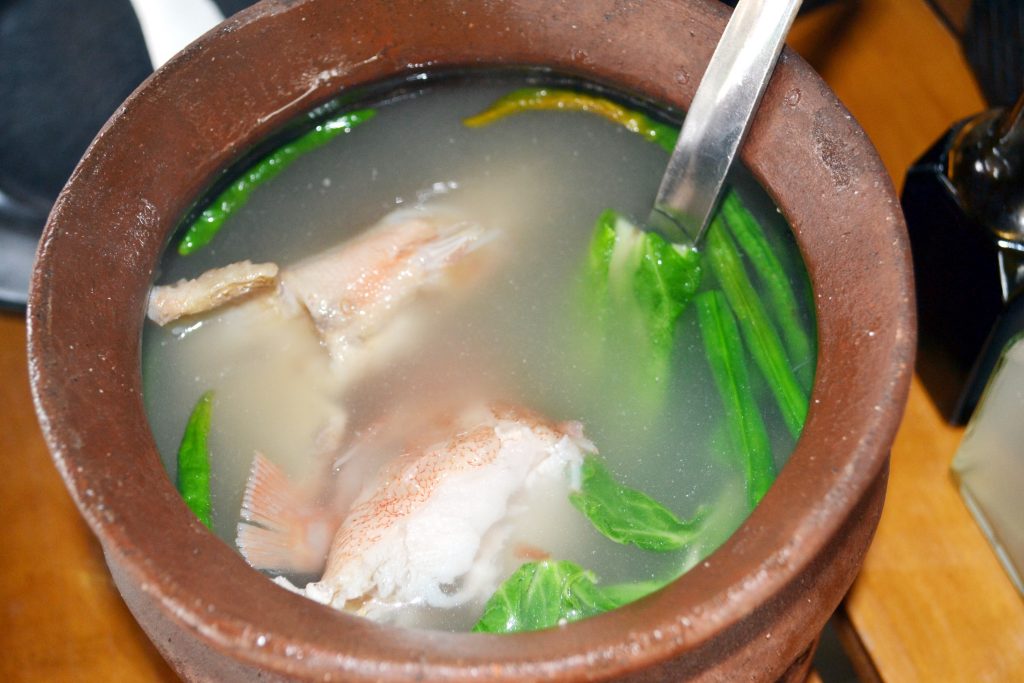It is now a common knowledge: Chinese restaurant is not complete without a bubbling tankful of grouper. Asia’s most in-demand reef fish, grouper fetches up to P6.000 per piece in Hong Kong and Singapore. In the blockbuster movie, Drunken Master, steamed grouper was one of the many dishes Jackie Chan’s character requests during an attempted meal-theft.

Most of the groupers come from the Philippines, a country considered to be the center of the Coral Triangle, a region between the Pacific and Indian Oceans that harbors 75% of all known species of plants and animals that thrive among the ecologically-fragile coral reefs.
There are 40 species of grouper, which Filipinos called lapu-lapu, in honor of Cebu’s legendary chieftain who killed Ferdinand Magellan in the Battle of Mactan. “The grouper is a seafood highly-valued for its exquisite taste and texture,” says Dr. Rafael D. Guerrero III, a national scientist and former head of the Philippine Council for Marine and Aquatic Research and Development. “It is served in exclusive hotels and restaurants.”
Grouper is one of the most expensive fish around. In Hong Kong, it fetches up to P6,000 per piece. “Most Hong Kong people now choose to eat grouper because of the firm flesh. It’s tastier,” Ng Wai Lun, a restaurant owner, told a news agency. “Farmed fish is less tasty and fresh.”
In the Philippines, most of the spawning areas of lapu-lapu are found in Palawan, touted to be the country’s last frontier. Palawan and its territorial waters host some of the most productive yet exploited fisheries on earth, according to Worldwide Fund for Nature (WWF), a global conservation group.
The pristine waters of Palawan supply 50% to 55% of the country’s seafoods, with lapu-lapu contributing the biggest bulk. “The fish are exported to Hongkong, Singapore, Malaysia, China and other seafood hubs,” wrote Greg Yan when he with WWF-Philippines as communications and media manager.
Most of these countries want the grouper before being cooked must be alive. “Many Asians believe that eating red fish kept alive just moments before cooking is not only more savory, but also the secret to a long and prosperous life,” Yan wrote.
Most Filipino fishermen practice cyanide fishing in catching live fish, including groupers. They crush a couple of sodium cyanide tablets into a squeegee bottle of water, then dive around a coral reef. Once they find a fish, they squirt the toxic liquid into its face. The mixture stuns the fish without killing it, making it easy to catch in a net, or even by hand.
With cyanide, a fisherman can catch dozens. But the method proved to be devastating: chronic overfishing undermines the country’s ability to feed itself. “Look at the places where live reef fishing started a decade ago; they have all been fished out now,” WWF-Philippines deplored. “The traders and the migrant fishermen just scoop it all up and move on.”

According to Yan, most high-value grouper species are wild-caught. Unfortunately, the remaining wild stocks are fast disappearing from the country’s pristine waters. “Our wild stocks are fast becoming depleted because of overfishing as a result of their high price and big market demand,” Dr. Guerrero points out.
Actually, grouper is the common name for numerous members of marine fish in the sea bass family. Common varieties are the Red Grouper, Nassau Grouper, and Black Grouper. Many groupers can change color, depending on their surroundings.
Groupers may be found along coastal areas around the world, especially in the Gulf of Mexico, the Caribbean and the Mediterranean.
Today, groupers are facing extinction. In the Philippines, the Switzerland-based International Union for Conservation of Nature (IUCN) classified squaretail coral grouper, camouflage grouper and brown-marbled grouper as “vulnerable,” which means there’s “a projected decline of greater than 30% over the next 10 years.”
The following species found in the Philippine waters are considered “least concern”: leopard coral grouper, highfin grouper, white-dotted grouper, orange-spotted grouper and Malabar grouper). These species may face declining populations or threats but not the level required of a threatened (that is, vulnerable, endangered or critically endangered) listing.
Aside from overfishing, other reasons why groupers are being threatened include degradation of seagrass beds and coral reefs due to climate change and coastal development.
In the Philippines, Dr. Guerrero believes that there is still hope for lapu-lapu fisheries. “To conserve them, fishing pressure should be regulated and marine reserves where they are protected should be maintained,” he suggested. “Breeding them in captivity is another way.”
He says there are two common species grown in the country: the green grouper and the brown marbled grouper. “Fry of the former are now produced all year round by a local commercial hatchery while that of the latter are still gathered from the wild,” he reports.
Grouper fry and fingerlings used for stocking ponds and cages are caught from the wild by fishermen and sold to the growers. The major sources of grouper fry are in the provinces of Pangasinan, Cavite, Mindoro, Quezon, Masbate, Bulacan, Cagayan, South Cotabato, and Negros Occidental.
In raising lapu-lapu, site is the first thing
that should be considered. The Bureau of Fisheries and Aquatic Resources says
the suitable sites for cage culture of grouper are lagoons, coves and bays that
are free of pollution and protected from strong winds and
currents.
Groupers are carnivorous and voracious fish. “The common method of feeding the grouper is by giving it live fish like tilapia,” says Dr. Guerrero. “This can be done by either rearing Mozambique tilapia in a pond and then harvesting this to feed to grouper stocked in another pond, or both grouper and the ‘feed fish’ are raised together in the same pond.”

In experiments conducted in Bicol University’s College of Fishery in Tabaco, Albay using the grouper-tilapia polyculture system, the ratio of one grouper to 20 tilapias was found effective. This means that for every hectare, 20,000 fingerlings of tilapia and 1,000 fingerlings of grouper are stocked. The young of tilapia fingerlings which mature in the pond become the natural feed of the grouper.
Groupers can also be raised in cages. Feeding is
generally by means of trash fish given at frequencies ranging from twice a day
to every two to three days. Feeding to sanitation is commonly
applied. It takes around four to five kilograms of trash fish
to produce a kilogram of grouper.
“The culture period for grouper in ponds and cages takes four to six months, depending on the size of fingerlings stocked and management,” Dr. Guerrero says. “Marketable sizes for the fish range from 0.4 to 0.6 kilogram per fish.” — (To be concluded)
(Photos by the author)






